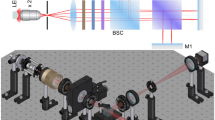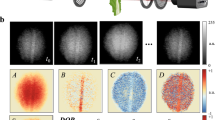Abstract
THE sugar industry is becoming increasingly interested in the possibility of replacing polarimeters of the visual type with photoelectric instruments. Of the various designs which have been suggested, a promising one is that in which the plane of polarization of the light emerging from the polarizer is made to oscillate through a suitable angle. When the analyser is perpendicular to the mean direction of the plane of polarization, the emergent light intensity, though it may be modulated at twice the frequency of oscillation, has a zero alternating component at the fundamental frequency. This condition is detected by means of a photocell and amplifier, the system thus combining the advantages of a.c. amplification and of the half-shadow principle used in visual polarimetry.
This is a preview of subscription content, access via your institution
Access options
Subscribe to this journal
Receive 51 print issues and online access
$199.00 per year
only $3.90 per issue
Buy this article
- Purchase on Springer Link
- Instant access to full article PDF
Prices may be subject to local taxes which are calculated during checkout
Similar content being viewed by others
Author information
Authors and Affiliations
Rights and permissions
About this article
Cite this article
GILLHAM, E. Photoelectric Polarimeter using the Faraday Effect. Nature 178, 1412–1413 (1956). https://doi.org/10.1038/1781412b0
Issue Date:
DOI: https://doi.org/10.1038/1781412b0
This article is cited by
-
Use of the electro-optic light modulators for the measurements of birefringence
Czechoslovak Journal of Physics (1974)
-
Faraday Effect Ellipsometer
Nature (1963)
Comments
By submitting a comment you agree to abide by our Terms and Community Guidelines. If you find something abusive or that does not comply with our terms or guidelines please flag it as inappropriate.



